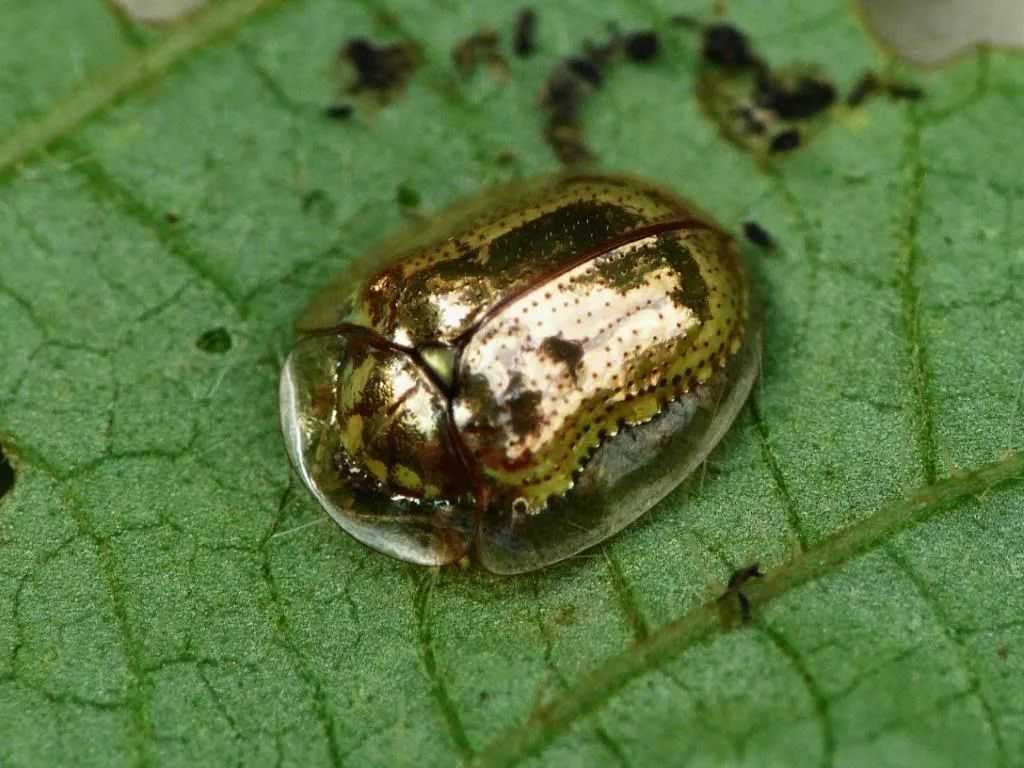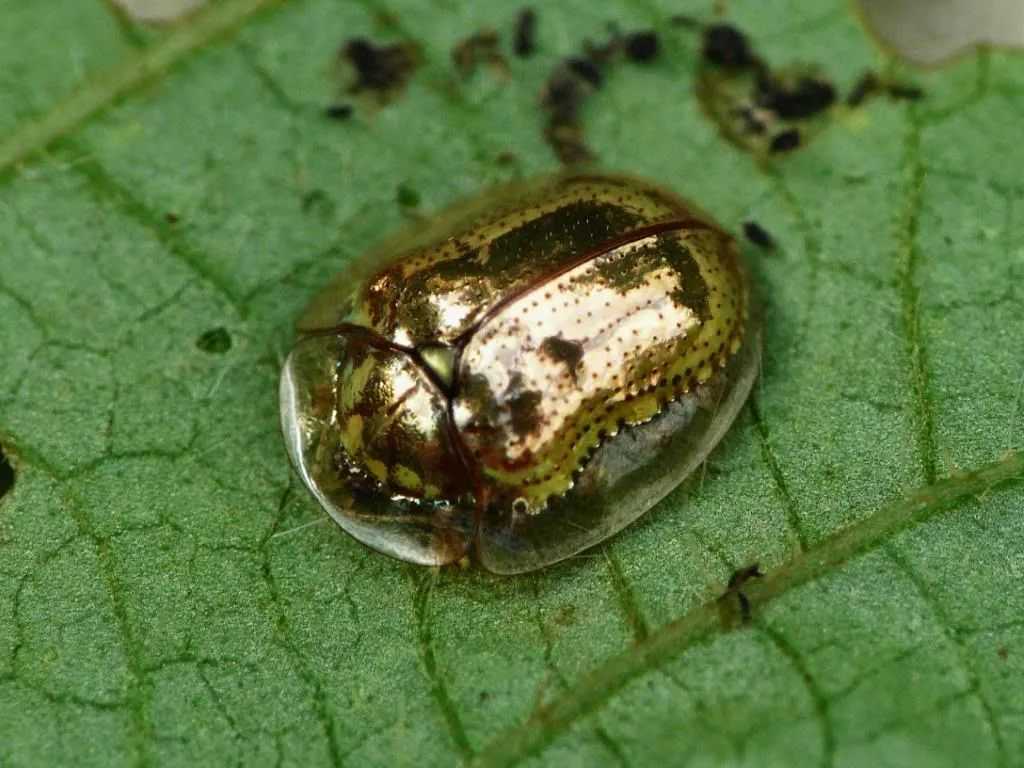The Golden Tortoise Beetle: Shimmering Jewel of the Leaf Beetle Family with a Vast American Range
Belonging to the leaf beetle family (Chrysomelidae), the golden tortoise beetle (Charidotella sexpunctata) is a tiny arthropod renowned for its iridescent golden hue and domed, tortoise-like shell. Native to the Americas, this species boasts a remarkably wide distribution, thriving from southern Canada to South America in diverse habitats ranging from farmlands to forests.

Source: Images from the Internet, if there is any infringement, please contact the removal of
A Living Gem: Anatomy and Adaptive Brilliance
-
Metallic Magic: The Science of Iridescence
The beetle’s elytra (hard wing covers) display a stunning golden sheen, produced by microscopic ridges that refract light. When threatened or stressed, it can alter the moisture between these layers, temporarily turning its shell reddish-brown—a defense mechanism that startles predators. This optical trickery makes it one of nature’s most dynamic color changers among beetles. -
Tortoise-like Design for Survival
Growing to just 5–8 mm, its rounded, domed shape resembles a miniature tortoise, providing protection against predators. The edges of its elytra are transparent, creating a "glass-like" border that further confuses attackers. Its legs and body are pale yellow, blending seamlessly with the undersides of leaves where it feeds.
Life Cycle and Ecological Role
-
Feeding Habits and Reproduction
The golden tortoise beetle primarily feeds on morning glory plants (Convolvulaceae), using its mandibles to scrape leaf tissue. Larvae are less glamorous—spherical and covered in spines, they carry fecal matter on their backs as a deterrent. Adults mate prolifically, laying eggs on host plants, and can undergo multiple generations per year in warm climates. -
Invasive Potential and Natural Distribution
While native to the Americas, its adaptability has raised concerns about potential invasions in other continents. In its natural range, it serves as prey for birds, spiders, and parasitic wasps, while also acting as a pollinator and decomposer in plant ecosystems.
Scientific Interest and Cultural Noteworthiness
Researchers study its iridescent properties to develop new materials, from optical coatings to renewable energy technologies. In popular culture, the beetle’s dazzling appearance has made it a subject of nature documentaries and educational campaigns, often celebrated as a living example of evolutionary beauty.
Despite its widespread presence, the golden tortoise beetle faces minor threats from pesticide use and habitat loss. Its resilience and adaptability, however, highlight the tenacity of small creatures in navigating human-altered landscapes—reminding us that even the tiniest jewels of nature hold secrets worth preserving
-------- END --------






